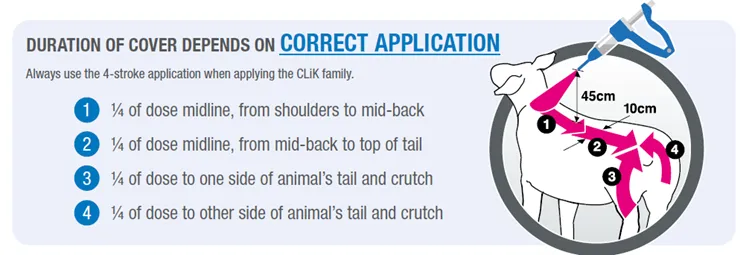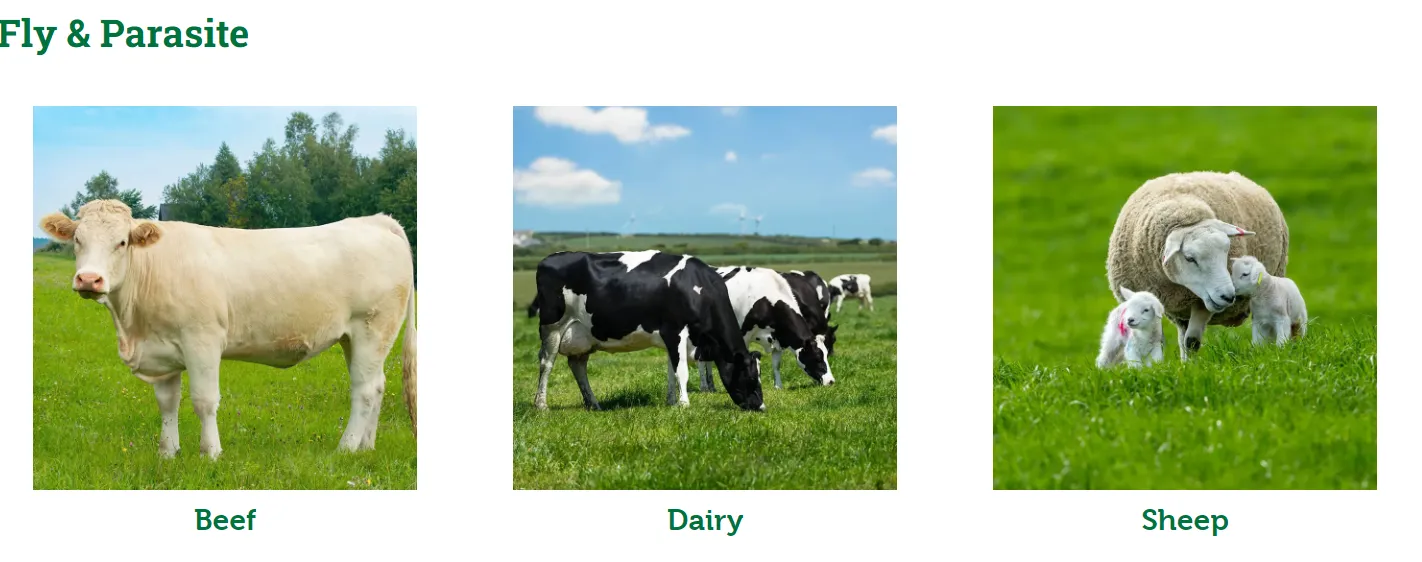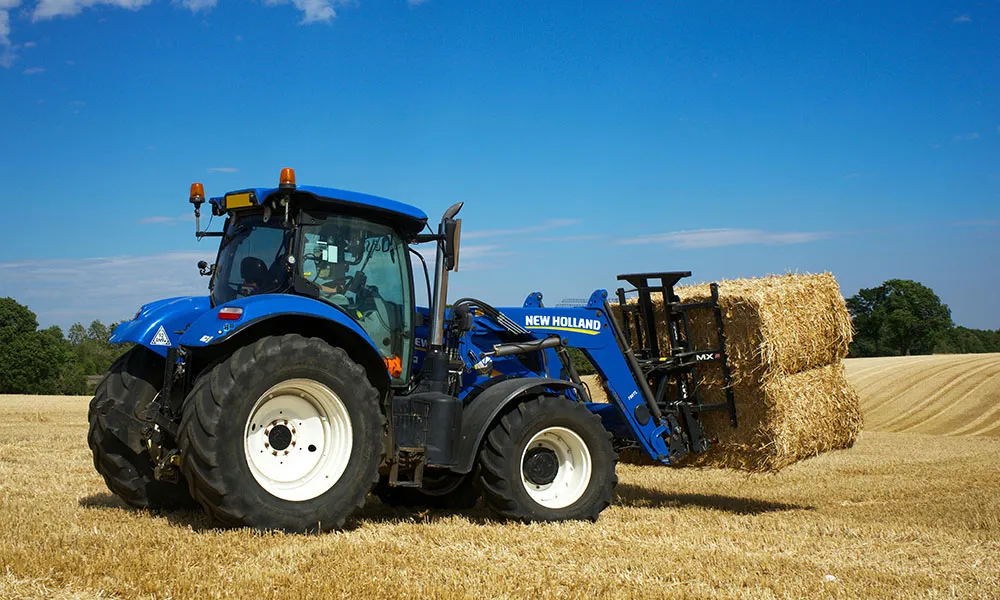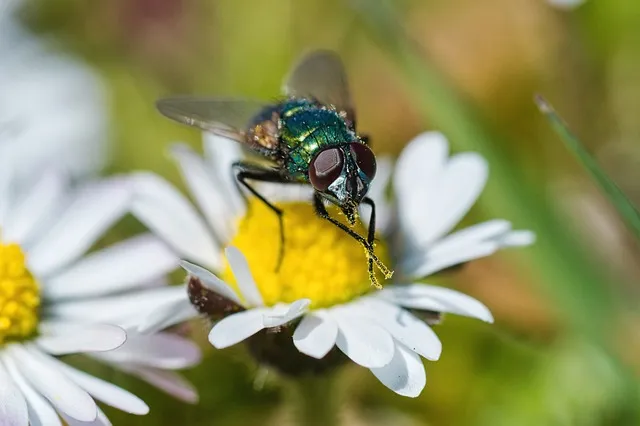
Blowfly (green bottle) is the main external parasite traditionally affecting sheep in late spring and during the summer months here in Ireland. However, changing weather patterns have resulted in an increasingly unpredictable season which, of late, is lasting longer.
Blowfly strike causes:
- Pain and suffering for individual sheep;
- Secondary bacterial infections;
- Death;
- Production losses for the farmer;
- Increases labour treating animals;
- Increased veterinary costs.
All sheep farmers will be aware that strike can occur very quickly - often within 24 hours, but how is this possible?
A single adult female blowfly can lay up to 300 eggs at a time (approximately 3,000 eggs throughout the average 30-day lifespan). Therefore, one single fly has the potential to produce 3,000 new flies.
If you then imagine that many strike cases involve multiple female flies laying eggs on one single sheep, it is easy to see how quickly thousands of maggots could be present in a 24-hour period - in a single case of strike.
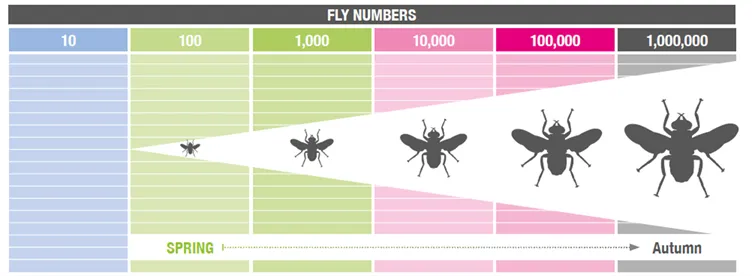
But why do blowflies lay eggs on sheep? One of the principle aims of any living organism is to ensure the continuation of its own species. Blowflies are no different. After emerging, a female blowfly will mate almost immediately and look for a source of organic matter to lay eggs.
Therefore, a sheep’s fleece acts as a nice incubator for the eggs and larva (maggots) to develop and an attractive location for the female fly to lay its eggs – especially if it is contaminated with faeces.
Over the years, several mechanical methods have been adopted in the sheep industry to mitigate flystrike, including: shearing; dagging; and tail docking.
Additionally, the healthier your sheep are the cleaner the sheep/fleece will be. Operating a good worm control programme, while preventing scour/coccidiosis will avoid contamination of the fleece.
Wounds on ram’s heads for example – that have discharge which the flies will be attracted to - can increase the risk of strike. Moreover, the presence of footrot can also lead to flystrike, while proper disposal of dead animals on farm is also important when it comes to minimising the fly population.
By following these good management practices, we can prevent the number of flies developing in the environment in the first place – on both our own and neighbouring farms.
|
Factors affecting the risk of strike |
|
|
Increased risk |
Decreased risk |
|
|
|
|
|
|
|
|
|
|
|
|
|
|
|
|
|
|
‘Prevention is better than cure’
While the management practices above will decrease the risk of flystrike, at the end of the day, using an appropriate preventative insecticide is the most practical way of managing the disease.
Using a preventative treatment early in the season prevents established blowfly strike in the flock - to protect the sheep and to prevent those first waves of flies from breeding. Doing this will reduce blowfly numbers, and strike risk, later in the season.
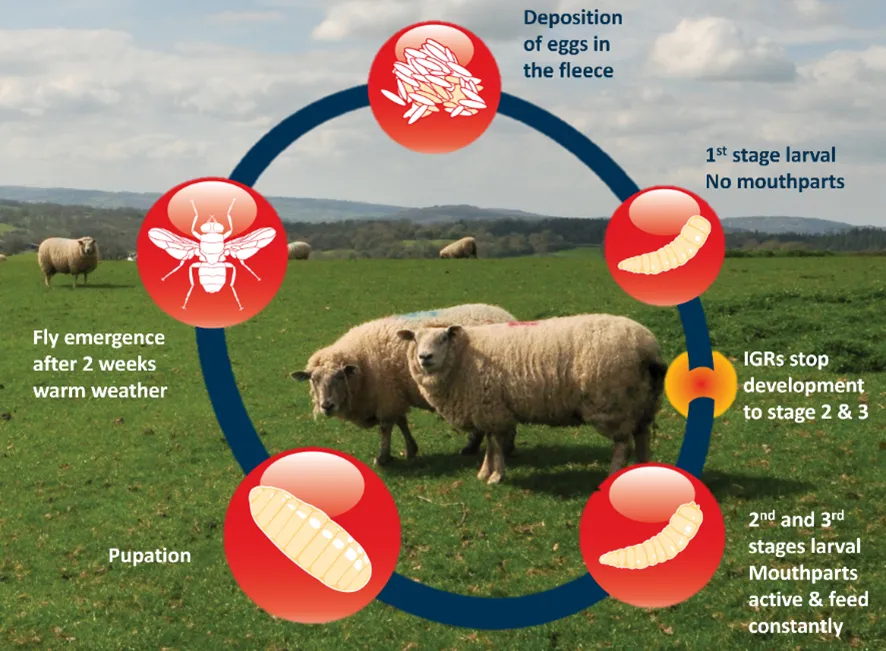
Nowadays, prevention has never been easier using Insect Growth Regulators (IGRs). Insect growth regulators interrupt the blowfly life cycle, preventing stage 1 maggots (which develop from the eggs usually within 12 hours) developing into stage 2 maggots.
Stage 1 maggots have no mouthparts, are unable to feed and die. As a result of being unable to feed they cannot create any skin damage on the sheep.
Narrow-spectrum Dicyclanil is the active ingredient that works by preventing the 1st stage maggots developing into the second stage maggots. Its mode of action is targeted at the lifecycle of flies, therefore has no activity against other ectoparasites.
Cypermethrin, Deltamethrin pour-ons and Diazinon dip, are broad spectrum insecticides, meaning they will kill multiple stages of the lifecycle of many insects.
However, from a sustainability point of view, narrow-spectrum products should be chosen over broad-spectrum products.
It is recommended to use appropriate PPE when applying products. It is suggested not to shear sheep for two months post administration of a pour-on (three months post-dipping) and in general to handle sheep as little as possible post administration.
|
Active + Concentration |
Blowfly prevention |
Blowfly treatment |
Other parasites |
Withdrawal
|
|
|
8 weeks (can be applied 3 weeks post shearing) |
|
|
Meat 7 days |
|
|
16 weeks (can be applied on the same day as shearing) |
|
|
Meat 40 days Milk 0 days |
|
Dicyclanil 6.25% |
19 weeks (can be applied on the same day as shearing) |
No |
No |
Meat 40 days |
|
High-cis cypermethrin 1.25% |
6 to 8 weeks |
Yes |
Headflies Ticks Biting lice |
Meat 8 days |
|
Deltramethrin 10mg/ml |
No |
Yes |
Ticks Lice |
Meat 35 days Milk 0 days |
|
Diazinon |
8-10 weeks |
Yes |
Ticks Lice Scab |
Meat 49 days |
Correct application is important for all animal medicines - especially blowfly control. The Clik™ range (Clik™, Clik extra™, Clikzin™) offers flexibility in terms of duration of action and meat withhold time.
The range contains the IGR Dicyclanil. Fleecebind™ technology allows the IGR to bind to the lanolin in the wool and aids in the dispersion of the IGR across the fleece.
Early application has the greatest effect on the general fly population and has a lower cost per dose, as one is applying the product to a smaller lamb. When treating ewes, remember Clik™ and Clik extra™ can be applied off shears - saving labour.
When it comes to administering the Clik™ range, it is recommended to use a 4-stroke technique, with a correctly calibrated gun with a fan spray nozzle, to maximise fleece coverage - ideally on a dry day.
Sheep should be grouped according to weight where possible – preferably in a pen. In a race, the fleece can easily be moved about as the sheep jump about and on top of each other.
The product moves by gravity and if it isn’t on the midline, one side of the sheep may not be protected. While this may take a bit more time, it will ensure the animals get the correct dose. Remember, too little will not give the full protection and too much is wasting your money!
Pick up your treatments today:





